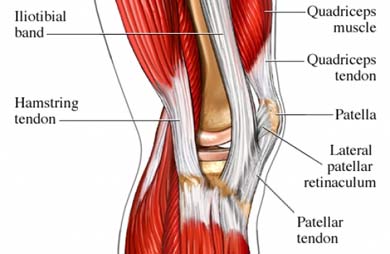It should have been one of my busiest weekend with my pending assignments. I was stoked that by the end of the week nothing much was left in my mind, and the only thing which I knew would work for me to ‘recover’ from the stress was going for a bicycle ride, trail running or both. So I manage to gather a few friends to ride with me on Friday night, but one of them had to cancel as his wife had contraction (yeah, they’re expecting another addition to the family). Just a short ride in Putrajaya, around 18km or so. Slow spinnin’, and guiding my friend how to spin, and when to tell that you’re spinning too fast. That’s when you find your shoulders moving frantically or bum bumping against the saddle as u cycle (meaning ur butt is not glued on the saddle). It was a short ride but a good one. I need to get back in shape and I will do it gradually. Did some stretching after. I find that some of my tri/running friends do not stretch their inner thigh. It is one of the important stretches you can do to maintain your knee stability .Your inner thigh muscles are one of the 5 muscle groups which maintains the knee’s stability; Main muscles affecting knee stability;
- Quadriceps
- Hamstring
Other muscles affecting knee stability;
- Calf muscles
- Hip abductors (located in the outer thigh)
- Hip adductors (located in the inner thigh)
Fibrous tissue affecting knee stability ;
- Iliotibial band (IT band, or ITB)
QUADS, HAMSTRING,CALF

ADDUCTORS

Tight adductors
Tight adductors can throw off the balance of power in your legs. If your adductors (inner thighs) can’t effectively do their job (help stabilize the knee throughout the running movement), your hamstrings will be recruited to pick up the slack, putting them at an increased risk of injury. While some runners neglect to stretch their adductors, others have the opposite problem, and do exercises that can overstretch increasing the risk of a muscle pull.
p.s. : seated climbs for cyclists may also trigger tight adductors especially if your training regime does not include strengthening for your precious inner thighs !! Allow me to translate it to Malay , ‘mengayuh basikal di bukit sambil duduk boleh mengakibatkan paha (bahagian dalam) yang ketat, terutamanya jika latihan menguatkan bahagian paha ini tidak dipraktikkan’
Stretching the adductors/inner thigh


ILIOTIBIAL BAND


Tight Iliotibial band (ITB)
ITBFS or ITB Friction Syndrome; is an overuse injury that produces pain on the lateral knee during running and, occasionally, cycling. Pain is generally caused by an unusually tight ITB, the undersurface of which frictions over the lateral femoral condyle.
Stretching the ITB



hey this is good, especially on the cycling reference. im recovering from a knee injury and has just started cycling… however sometimes my knee hurts.
thanks for the stretches!
🙂 hey, thanks. 🙂 hope ur knee gets well soon.try to ice it everytime after u bike 😛
-kak Julie-
Useful tips.. Try to discipline myself to spent atleast 5 mnt for all these stretches after every ride….!
fadil : i hope !! :)before ride pon kena stretching sket. masa ride if muscle dh nk cramp u bley stretching atas bike. after ride also important.
If your knee pain is related to IT Band Friction Syndrome, you should
definitely check out the website: http://www.bulletproofknee.com . Good
luck!
thanks for sharing the link 🙂
Thanks for the advice. Being an average joe in the exercise arena, i never stretch. Now i know.
Heyya Azad. I see it as knowledge. Beneficial + vital knowledge needs to be shared ! 🙂 and here’s my way contributing to that. Happy stretching !! p.s. rmmber, dont stretch cold muscles, and dont over stretch. cheers,julie.
I’m doing my bit to tackle Global Warming. Join other members who are making a difference
thanks for sharing..now i know in detail about ITB & the strecthing..luv it
Thanks Detiaffendi 🙂 Happy stretching !!
I’m doing my bit to tackle Global Warming. Join other members who are making a difference
please i need registration form for all amarathon. i can’t get it from their web
hi azita. sorry for the late reply. i guess by now that you have the info you were looking for. or else, click on this link (the 2011 events calendar i compiled) https://missjewelz.wordpress.com/2011/01/13/sports-calendar-%e2%80%93-2o11/
Hi Azita. There are plenty of websites (And blogs) which share links to race events websites. You have to look around ! 🙂 I myself did my own little research for any info that I share here in this blog. Any particular events which you are looking into ? Do take a look at my latest blog post. There is an event calendar which you can look at for the various sports events available here in Malaysia.
TQ.
missjewelz
idont stretch tips inner thigh,when ever i want to do so i feel pain in my glutenous maximumus(iliotabial muscle) please advise som medicine
Hi Tanveer. For maintenance purpose whether you are active training or not is go for a good sports massage, or deep tissue massage. Focus on the areas which you normally feel tightness i.e. your inner thigh. It’ll be a good start. Once you’ve relieved from the tightness, you can start inserting stretching session not just for inner thigh, but for the whole body. Normally I like to start from the legs, and work upwards. Remember, stretching is not suppose to be done until it reaches the pain threshold. Even when you have your sports massage done, make sure that the masseur does not apply excessive pressure causing sharp pain.
Most of us aren’t guided correctly the best ways to stretch. Take a look at some here
http://www.healthkart.com/resources/10-common-stretching-mistakes/
http://www.fitness.com/articles/1226/10_common_mistakes_made_by_individuals_who_engage_in_stretching_exercise.php
p.s. avoid fast and jerky stretching movements !
Hope the tips and links above help !
-missjewelz-